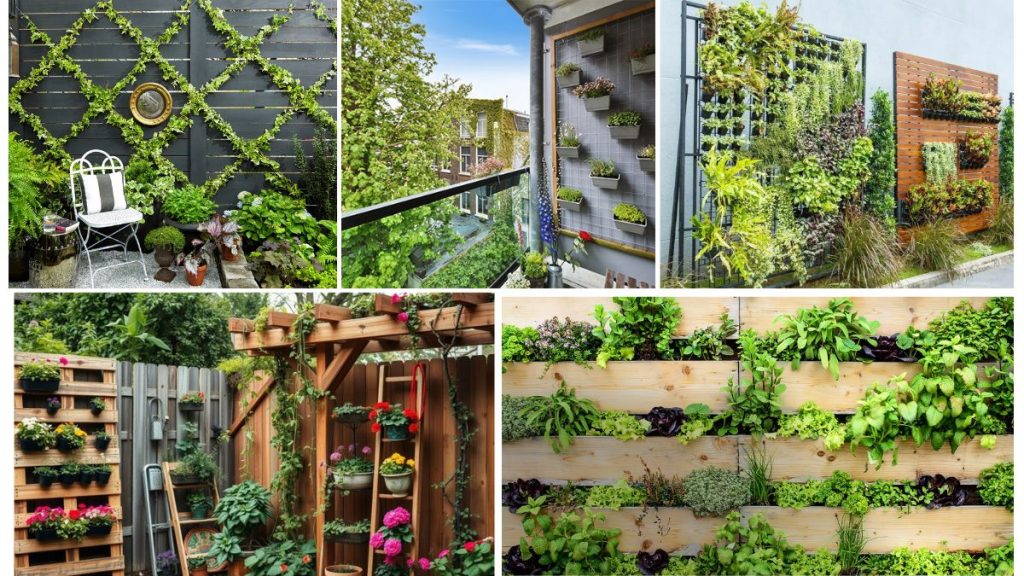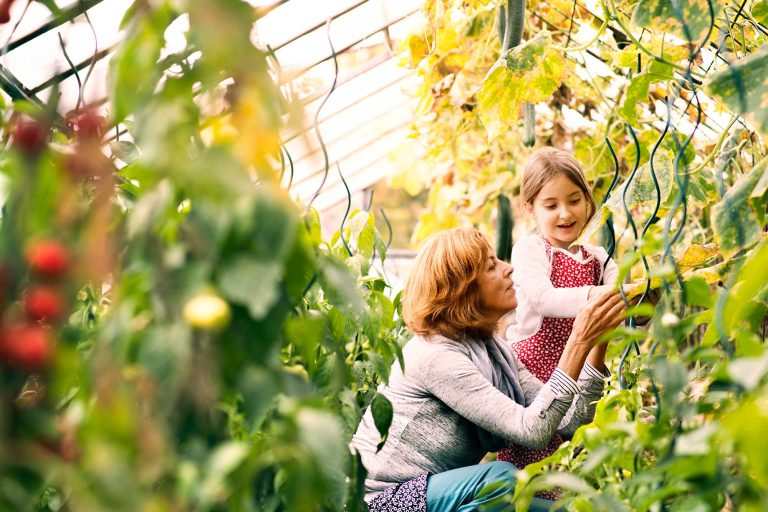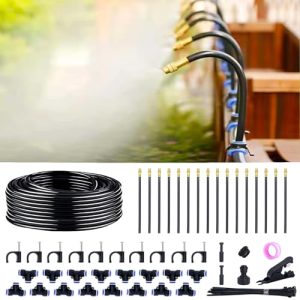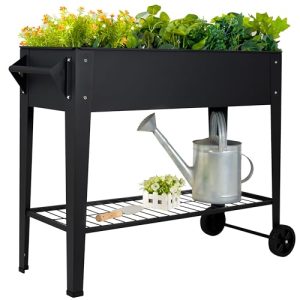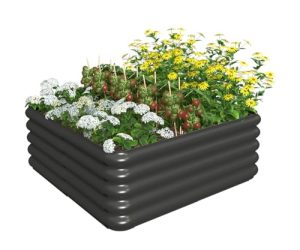Imagine stepping into your backyard and being greeted by a vibrant wall of greenery. This is the magic of vertical gardens.
These living walls are not just stunning; they’re also practical and space-saving. If you’re looking to add beauty to your home while maximizing your space, a vertical garden might be the perfect solution for you. Picture this: a lush tapestry of plants cascading down your wall, transforming any dull corner into a lively oasis.
The good news? Designing a vertical garden is easier than you might think. With the right guidance, you can create a masterpiece that reflects your personality and enhances your living space. You’ll discover simple steps to create your own vertical garden. Whether you’re a seasoned gardener or a beginner, you’ll find tips that fit your skill level. Ready to make your home greener and more beautiful? Let’s dive into the world of vertical gardening!
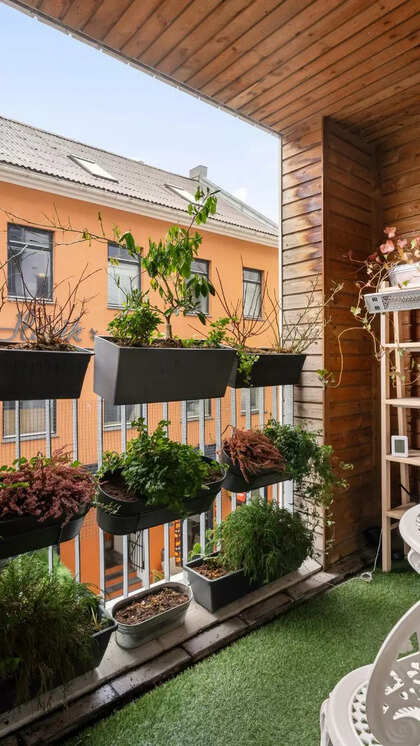
Credit: timesofindia.indiatimes.com
Benefits Of Vertical Gardens
Enhancing small spaces, vertical gardens offer greenery without taking up much ground area. They improve air quality and beautify walls, creating a lively atmosphere. Perfect for urban settings, these gardens maximize limited space efficiently.
Vertical gardens are a delightful way to bring greenery into limited spaces. Not only do they offer an innovative approach to gardening, but they also provide numerous benefits that enhance both living and working environments. Whether you’re an urban dweller with a tiny balcony or someone looking to spruce up an office space, vertical gardens are a versatile solution.Space Optimization
Vertical gardens make the most of limited space by growing plants upward rather than outward. This is ideal for apartment dwellers or those with small patios. You can create a lush garden even in the tightest of spaces. Imagine transforming a bare wall into a green oasis. It’s a game-changer for those with a love for gardening but little room to spare.Improved Air Quality
Plants are natural air purifiers. By introducing a vertical garden, you can significantly improve the air quality around you. They absorb pollutants and release oxygen, making your environment healthier. During a particularly stressful week, I found that spending time next to my vertical garden helped me breathe easier and feel more relaxed. It’s like having a mini forest inside your home.Aesthetic Appeal
A vertical garden can dramatically enhance the visual appeal of any space. They add a touch of nature’s beauty to otherwise mundane walls. The variety of plants and arrangements can suit any style, from modern minimalism to bohemian charm. Guests often compliment my vertical garden, and it serves as a great conversation starter. It’s a living piece of art that evolves over time. By embracing vertical gardening, you not only save space but also contribute to a healthier environment and a more attractive living space. Have you considered how a vertical garden could transform your own home or office?Choosing The Right Location
Choosing the right location for your vertical garden is crucial to its success. The location determines not only the health of your plants but also the ease with which you can maintain them. Consider the following factors to make an informed decision.
Indoor Vs Outdoor
Deciding between an indoor and outdoor vertical garden can be a game-changer for your plants. Indoor gardens allow you to control the environment more precisely, making them suitable for homes with limited outdoor space. You can place them in kitchens or living rooms to enhance the aesthetic appeal and enjoy fresh herbs at arm’s reach.
Outdoor vertical gardens, on the other hand, benefit from natural sunlight and rain, reducing the need for artificial lighting and frequent watering. They can be mounted on exterior walls or fences, transforming unused spaces into lush landscapes. Which suits your lifestyle better?
Sunlight And Shade Considerations
Sunlight is the lifeblood of plants, and getting the amount right can be tricky. Assess the daily sunlight exposure in your chosen location. Some plants thrive in full sun, while others prefer shade. If your garden spot receives limited light, consider shade-loving plants like ferns or mosses.
Don’t forget about seasonal changes; the sun’s angle shifts throughout the year. A spot that was perfect in summer might not be ideal in winter. Think about how this affects your plant choices.
Accessibility For Maintenance
Maintenance can be daunting if your garden isn’t easily accessible. Consider how often you’ll need to water, prune, or harvest. A vertical garden tucked away in a corner might look great but can become a hassle if you need to stretch or climb to tend to it.
Ensure your garden is at a comfortable height and reachable. This makes regular upkeep more manageable and increases the likelihood that you’ll keep your green oasis thriving. How accessible is your chosen spot?
Selecting Suitable Plants
Designing a vertical garden is a delightful way to bring greenery into small spaces, but the secret to a thriving installation lies in selecting the right plants. Choosing plants for your vertical garden requires a careful assessment of your environment, their growth habits, and their maintenance needs. This thoughtful selection ensures that your vertical garden not only flourishes but also becomes an enchanting visual treat.
Climate And Environment
Your local climate plays a significant role in plant selection. If you live in a region with hot, dry summers, opting for drought-tolerant plants like succulents or certain herbs can be wise. Conversely, if your area experiences heavy rainfall, consider moisture-loving plants such as ferns or mosses. Additionally, take into account the specific environment of your vertical garden. Is it indoors or outdoors? Does it receive direct sunlight or is it shaded? Answering these questions will help you choose plants that will thrive in your specific conditions.
Growth Habits
Understanding the growth habits of plants is essential for a harmonious vertical garden. Some plants, like vines, naturally cascade downwards, making them ideal for the top of your garden. Others, such as bushy herbs, fill out horizontally and can add lushness to the middle sections. Consider how you want your garden to look and select plants that match your vision. Mixing plants with different growth habits can create a dynamic and visually interesting display.
Maintenance Needs
Think about how much time and effort you’re willing to dedicate to maintaining your vertical garden. Some plants require frequent watering and pruning, while others are relatively low-maintenance. If you’re new to gardening or have a busy schedule, you might want to choose plants that are known for their resilience and minimal care requirements. Conversely, if you enjoy gardening as a hobby, you might relish the challenge of tending to more delicate species. Consider your lifestyle and select plants that fit into your routine.
Designing Your Vertical Structure
Designing Your Vertical Structure Create a lush vertical garden by selecting suitable plants and arranging them in layers. Use sturdy frames or pallets for support. Ensure proper sunlight and watering for healthy growth.
Designing a vertical garden structure is an exciting journey that allows you to transform any wall or fence into a lush oasis. The key is to choose the right materials and ensure your design can withstand the weight of the plants and the elements. This section will guide you through the essentials of creating a sturdy and aesthetically pleasing vertical garden structure.Materials And Tools
Selecting the right materials is crucial for the longevity of your vertical garden. Common materials include wood, metal, and recycled plastics. Each has its benefits and challenges—wood is aesthetically pleasing but may require more maintenance, while metal can be more durable but might rust over time. Consider using a mixture of materials to balance cost and durability. For tools, you might need a drill, screws, saw, and measuring tape. Ensure you have a level to maintain balance and alignment, which is vital for both appearance and functionality.Diy Vs Pre-made Options
Deciding whether to build your vertical garden structure or buy a pre-made one depends on your skills, time, and budget. DIY options offer flexibility and a personal touch, allowing you to customize the design to fit your space perfectly. You can repurpose items like pallets or old ladders for a unique look. Pre-made structures are convenient and often come with detailed instructions, making them ideal for beginners. They can be more expensive but save time and effort. Which option suits you better? Consider how much time you have and whether you enjoy hands-on projects or prefer the ease of ready-to-use solutions.Support And Stability
Ensuring your vertical garden has the proper support and stability is crucial to prevent damage or accidents. Start by assessing the weight your structure will need to support, including soil, plants, and water. A robust frame and secure wall mounting are essential, particularly in windy areas. Use brackets, hooks, or wall anchors to reinforce your structure. Regularly check for signs of wear or instability, especially after storms or heavy watering. Wouldn’t it be disappointing if your beautiful creation collapsed? By prioritizing stability, you ensure your vertical garden remains safe and stunning for years to come.Irrigation And Drainage Solutions
Creating a vertical garden involves strategic planning for efficient irrigation and drainage. Use space wisely to ensure plants receive adequate water. Incorporate drainage systems to prevent waterlogging and maintain healthy growth.
Designing a vertical garden brings a refreshing splash of nature to urban spaces. However, ensuring your vertical oasis thrives requires smart irrigation and drainage solutions. Proper watering and drainage are crucial to maintaining healthy plants and preventing issues like root rot and mold.Watering Systems
A well-planned watering system can make or break your vertical garden. Drip irrigation is a popular choice, offering precise water delivery right to the plant roots. It minimizes water waste and can be automated for convenience. Consider using a soaker hose, which evenly distributes moisture across the surface. This method is cost-effective and easy to install. Remember, the key is to tailor your watering system to the specific needs of your plants and the layout of your garden.Preventing Overwatering
Overwatering is a common mistake that can lead to plant damage. Ensure your vertical garden has a reliable drainage system to avoid waterlogged roots. Use a moisture meter to monitor soil moisture levels, ensuring plants only receive water when necessary. Incorporating perlite or sand into your soil mix can improve drainage. Observe your plants regularly for signs of overwatering, such as yellowing leaves or mold growth, and adjust your watering routine accordingly.Managing Runoff
Runoff can be a challenge, especially in vertical gardens where water naturally flows downward. Design your garden with tiered sections to catch and reuse runoff effectively. Collect excess water using trays or reservoirs at the base to minimize waste. Ensure your garden’s structure is sturdy and can handle the weight of water and soil. Think about how you can use this runoff creatively—perhaps to hydrate a ground-level garden or potted plants nearby. How can you make every drop count in your space?
Credit: www.facebook.com
Soil And Fertilization
Healthy soil and proper fertilization are crucial for vertical gardens. Choose lightweight soil mixes rich in nutrients. Regularly apply suitable fertilizers to promote plant growth and ensure optimal health.
Creating a vertical garden is an exciting journey, but ensuring your plants thrive requires attention to soil and fertilization. The foundation of a healthy vertical garden lies in choosing the right soil mix and understanding how to feed your plants effectively. Let’s dive into the essentials of soil and fertilization for your vertical oasis.Choosing The Right Soil Mix
The soil is the backbone of your vertical garden. It needs to be lightweight yet rich in nutrients. A good mix might include components like coconut coir, perlite, and compost. Coconut coir retains moisture without becoming waterlogged, perfect for vertical setups. Perlite enhances aeration, ensuring roots get enough oxygen. Compost adds essential nutrients, promoting healthy plant growth. Experiment with small batches to find the perfect blend for your plants. Each plant type may have specific requirements, so be prepared to adjust as necessary.Organic Vs Synthetic Fertilizers
Choosing between organic and synthetic fertilizers can be daunting. Organic fertilizers come from natural sources like bone meal or fish emulsion. They release nutrients slowly, providing steady nourishment to plants. Synthetic fertilizers, however, offer a quick nutrient boost. They’re often more concentrated, providing immediate results. Consider your garden’s needs: do you prefer a gradual, long-term approach or an immediate impact? Personal experience might guide your choice. After switching to organic fertilizers, I noticed a significant improvement in my plants’ health and resilience. What’s your priority: sustainability or rapid growth?Feeding Schedule
A consistent feeding schedule is crucial for thriving plants. Over-fertilizing can harm plants, while under-fertilizing stunts growth. Regular feeding ensures plants get the nutrients they need. Create a schedule based on your plant types and their growth stages. Young plants might need more frequent feeding, while established plants may require less. Tracking your garden’s progress can help fine-tune this schedule. Have you noticed changes in your plants’ appearance or growth rate? Adjust accordingly to keep your vertical garden lush and vibrant.Pest And Disease Management
Designing a vertical garden requires careful pest and disease management. Choose pest-resistant plants and regularly inspect for signs of disease. Implement natural pest control methods to maintain a healthy garden environment.
Designing a vertical garden is a rewarding venture, but like any garden, it comes with its share of challenges. Managing pests and diseases is crucial to maintaining a thriving green space. A healthy vertical garden not only looks lush but also provides a safe habitat for plants and beneficial insects. Let’s dive into some practical strategies to keep your vertical garden free from pests and diseases.Common Pests
In a vertical garden, you might encounter common pests like aphids, spider mites, and caterpillars. These tiny invaders can wreak havoc if left unchecked. Recognizing them early is key to preventing widespread damage. Aphids, for instance, are small and often green, clustering on new growth. Spider mites create fine webs on leaves, while caterpillars chew through foliage.- Aphids:Small, often green, and cluster on new growth.
- Spider Mites:Create fine webs on leaves.
- Caterpillars:Chew through foliage, leaving ragged edges.
Natural Remedies
You don’t need harsh chemicals to protect your garden. Simple natural solutions can be surprisingly effective. Neem oil is a popular choice, acting as both a pesticide and a fungicide. Soap spray, made from mild dish soap and water, can suffocate small insects. Companion planting with herbs like basil and mint can also deter pests naturally.| Remedy | Usage |
|---|---|
| Neem Oil | Spray on affected plants to deter insects and fungi. |
| Soap Spray | Mix mild dish soap with water to suffocate pests. |
| Companion Planting | Use herbs like basil and mint to naturally repel pests. |
Regular Monitoring
Vigilance is your best defense against pests and diseases. Regularly inspect your plants to catch problems early. Look under leaves and around stems for signs of trouble. Document your observations—this helps you track recurring issues. Think about it: would you rather spend a few minutes each week checking your plants, or face a full-blown infestation? Early detection can save you time and effort in the long run. Your vertical garden deserves the best care, so make monitoring a regular part of your routine.Maintenance Tips
Designing a vertical garden requires strategic planning. Select plants that thrive in limited space and ensure proper sunlight exposure. Regular watering and trimming help maintain health and appearance.
Maintaining a vertical garden can feel like a rewarding adventure. Once your lush wall of greenery is established, keeping it healthy and vibrant is crucial. Understanding how to care for your vertical garden ensures it remains a focal point in your space for years to come.Pruning And Trimming
Regular pruning and trimming are essential for the health of your vertical garden. This helps prevent overcrowding and ensures each plant has enough space and light to thrive. Consider setting a monthly schedule to check for any overgrowth, dead leaves, or unhealthy plants. Using sharp, clean tools is critical to prevent disease transmission between plants. Pay attention to each plant’s growth pattern. Some plants might need more frequent trimming, while others require minimal intervention.Seasonal Care
Your vertical garden’s needs will change with the seasons. In spring, focus on encouraging new growth by adding organic fertilizer. Summer might require more frequent watering due to increased evaporation. Fall is a great time to prepare your garden for winter by cutting back on watering and insulating sensitive plants. During winter, some plants may go dormant. It’s essential to adjust care routines accordingly, providing just enough water to keep them alive without promoting growth.Long-term Sustainability
Sustainability should be at the heart of your maintenance plan. Choose native plants that adapt well to your local climate, requiring less water and care. This not only reduces your workload but also supports local biodiversity. Consider investing in a self-watering system. This ensures consistent moisture levels and can save time. Additionally, using organic fertilizers and pest control methods can contribute to a healthier environment for your plants and your home. Are you ready to see your vertical garden flourish with these maintenance tips? Embrace these practices, and your green wall will not only beautify your space but also become a testament to your gardening prowess.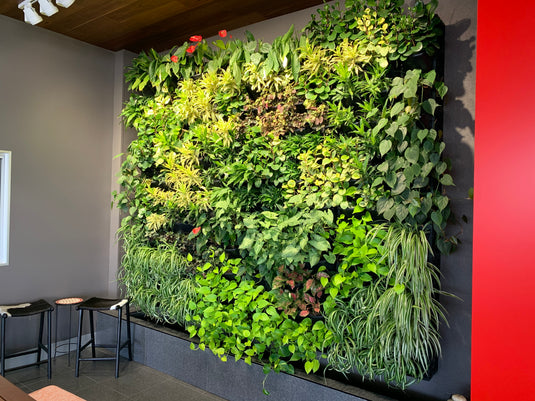
Credit: ecosustainablehouse.com.au
Frequently Asked Questions
What Is A Vertical Garden?
A vertical garden is a method of growing plants on a vertically suspended panel. It optimizes space by allowing plants to grow upwards, rather than spreading out horizontally. This type of garden is ideal for small spaces and urban environments, providing both aesthetic beauty and environmental benefits.
How Do You Start A Vertical Garden?
To start a vertical garden, first select a suitable wall or structure. Choose plants appropriate for your climate and sunlight conditions. Use a sturdy frame or containers to hold soil and plants. Ensure proper irrigation and maintenance to keep your vertical garden thriving.
What Plants Are Best For Vertical Gardens?
The best plants for vertical gardens include ferns, succulents, and herbs like basil and thyme. These plants are lightweight and have shallow roots, making them ideal for vertical growth. Choose plants that suit your climate and sunlight exposure for optimal results.
How Often Should You Water A Vertical Garden?
Watering frequency for a vertical garden depends on plant type and climate. Generally, vertical gardens need watering 2-3 times a week. Ensure proper drainage to prevent waterlogging. Adjust watering based on weather conditions and plant needs to maintain healthy growth.
Conclusion
Vertical gardens offer a fresh way to grow plants. They save space and add beauty to any area. Planning and creativity help make them successful. Choose the right plants for your climate. Consider sunlight, water, and structure. Start small with easy plants.
Learn as you grow. Vertical gardens benefit the environment and your home. They bring nature closer and can improve air quality. A well-designed garden can be rewarding. Enjoy the process and watch your garden thrive. This green venture can transform spaces into vibrant, living walls.
Let your imagination bloom!
